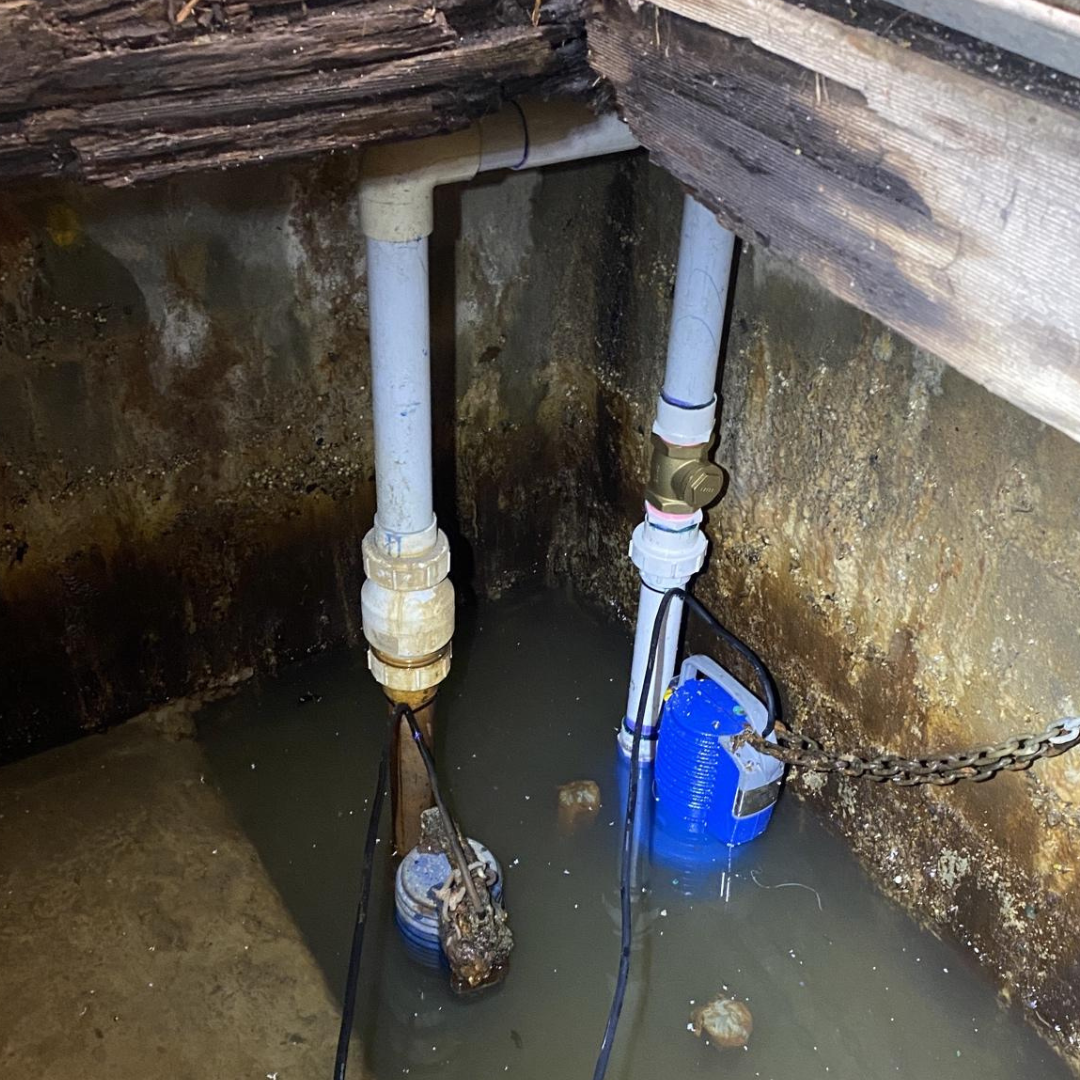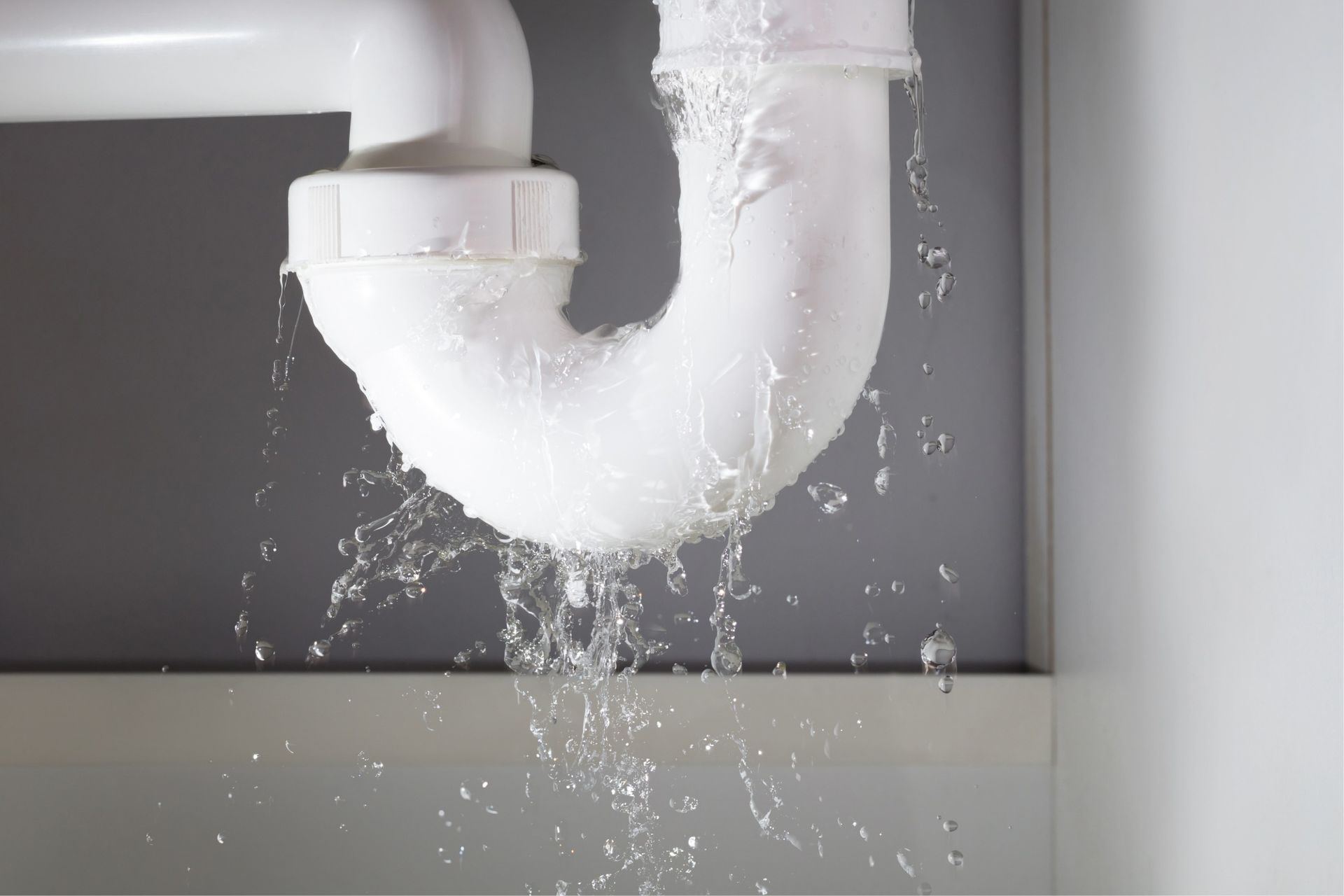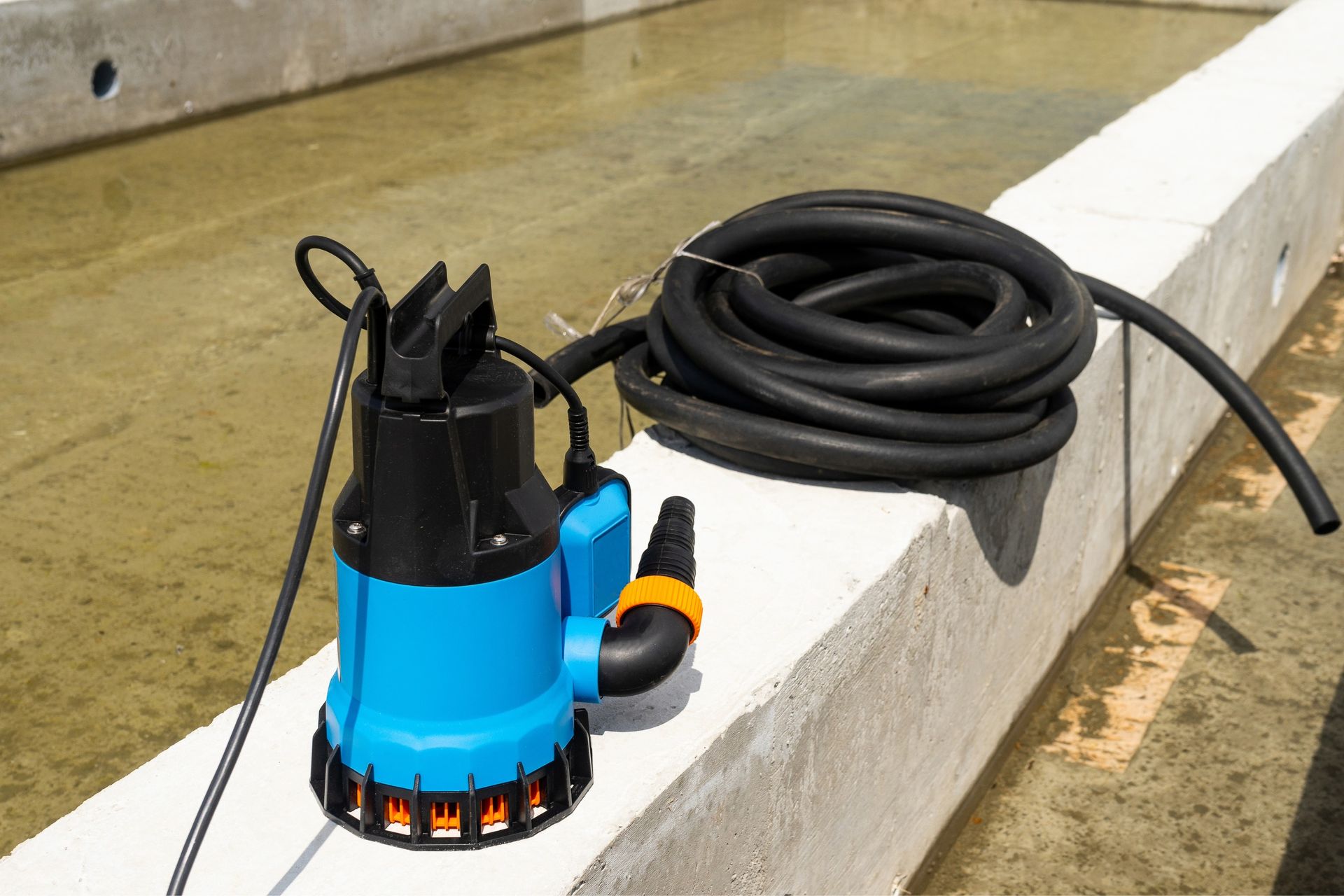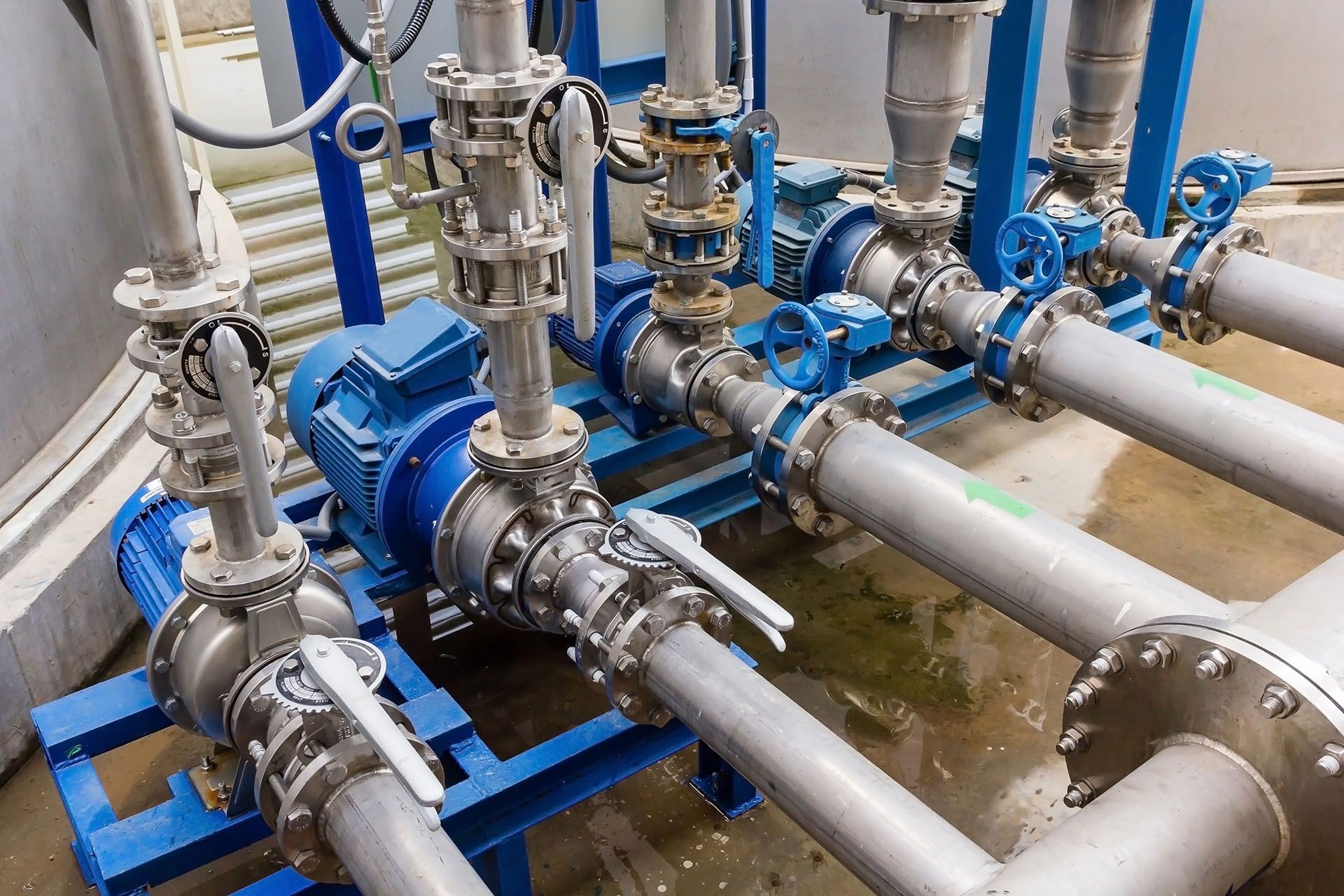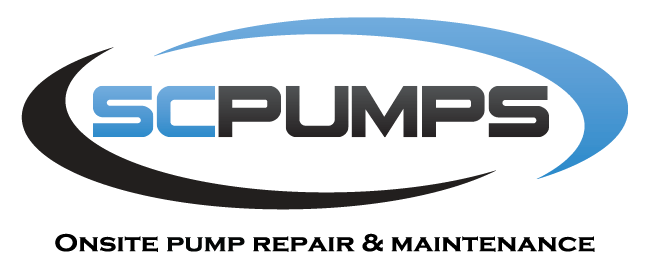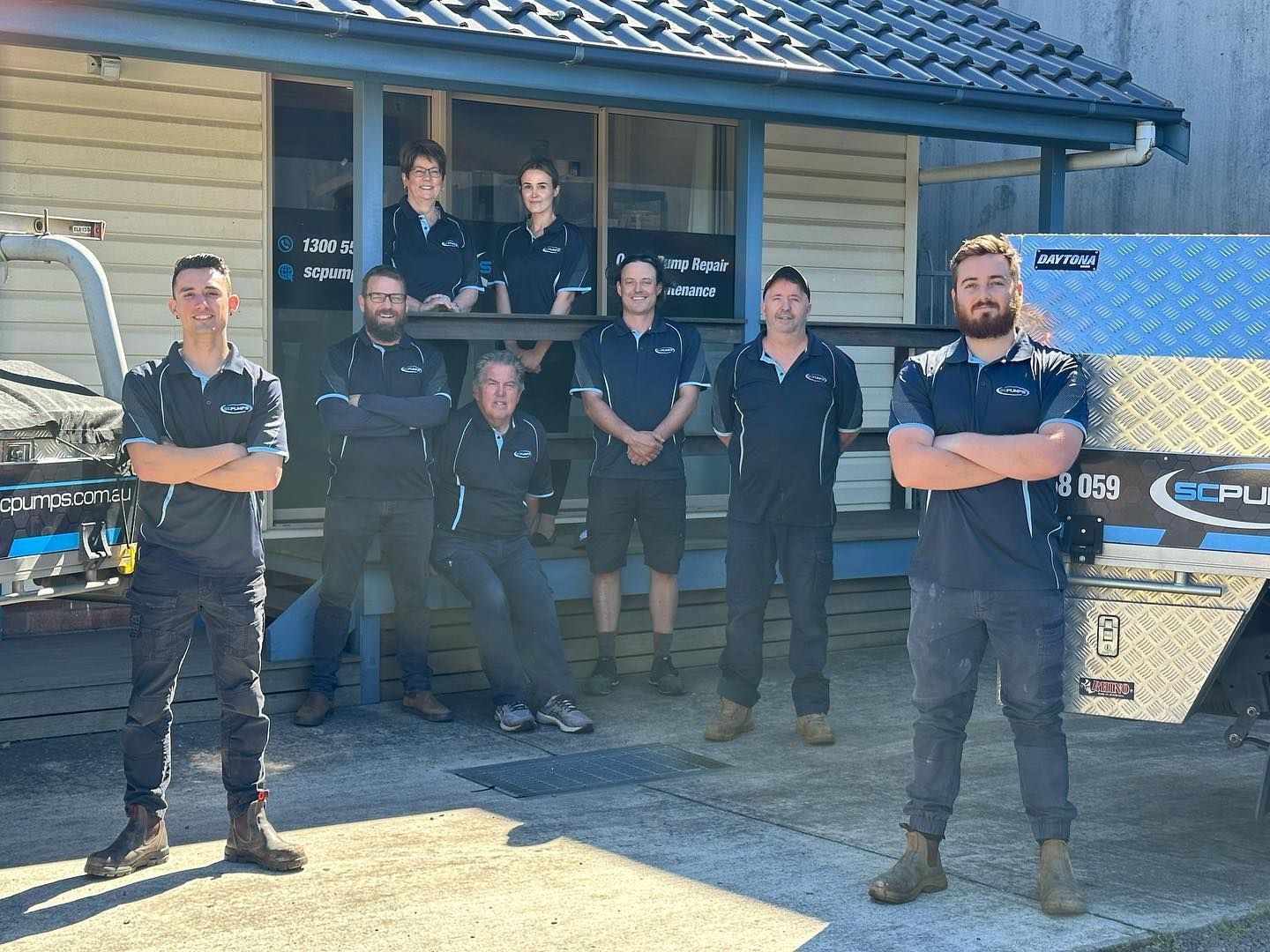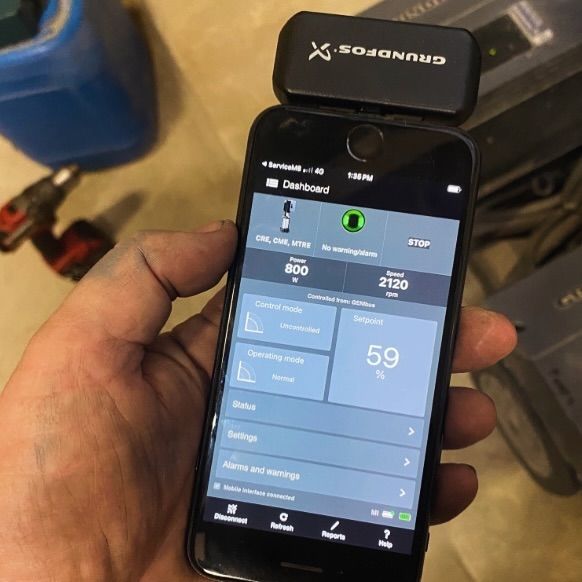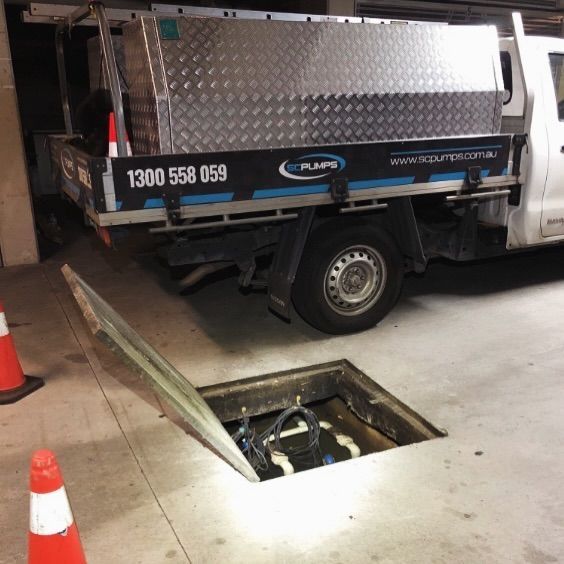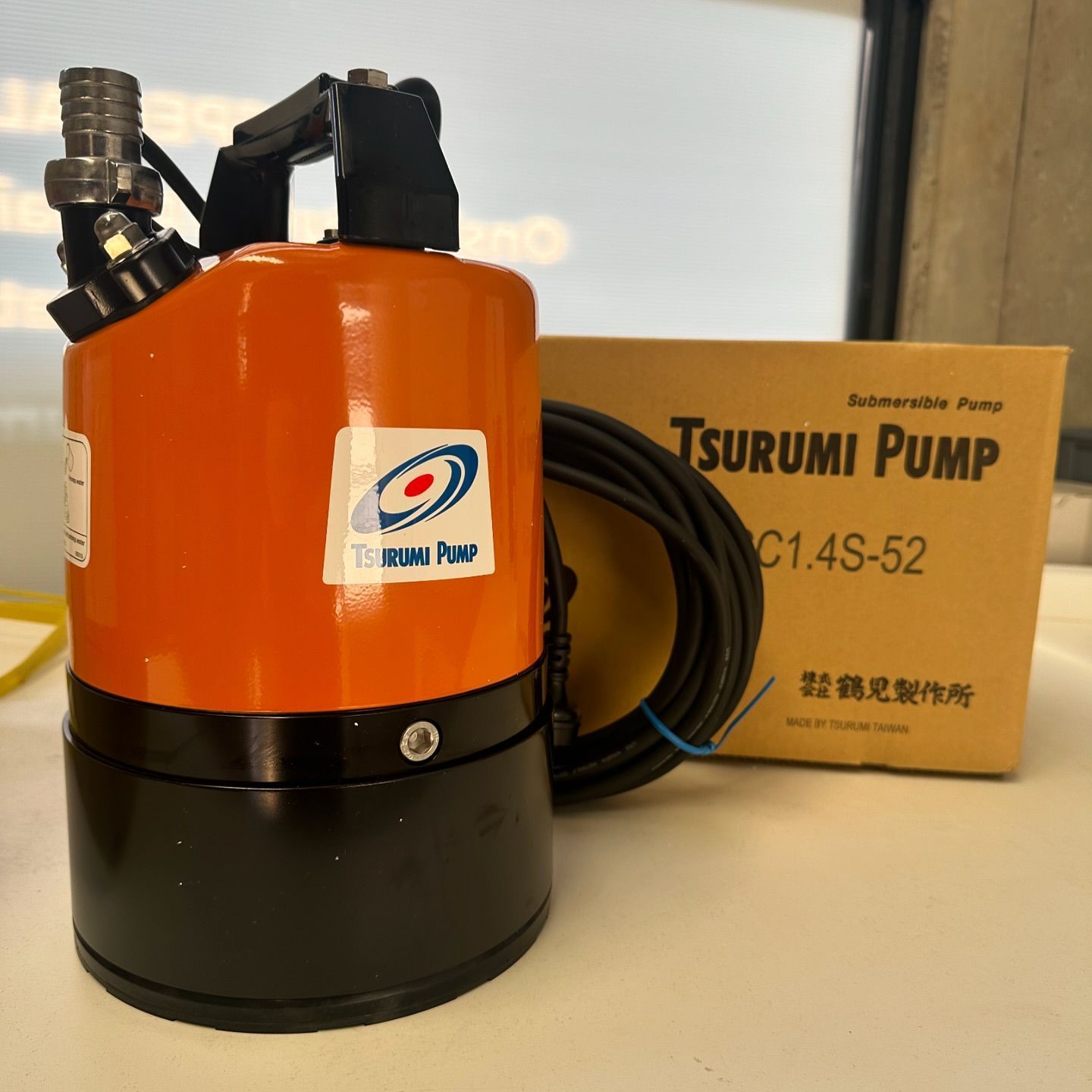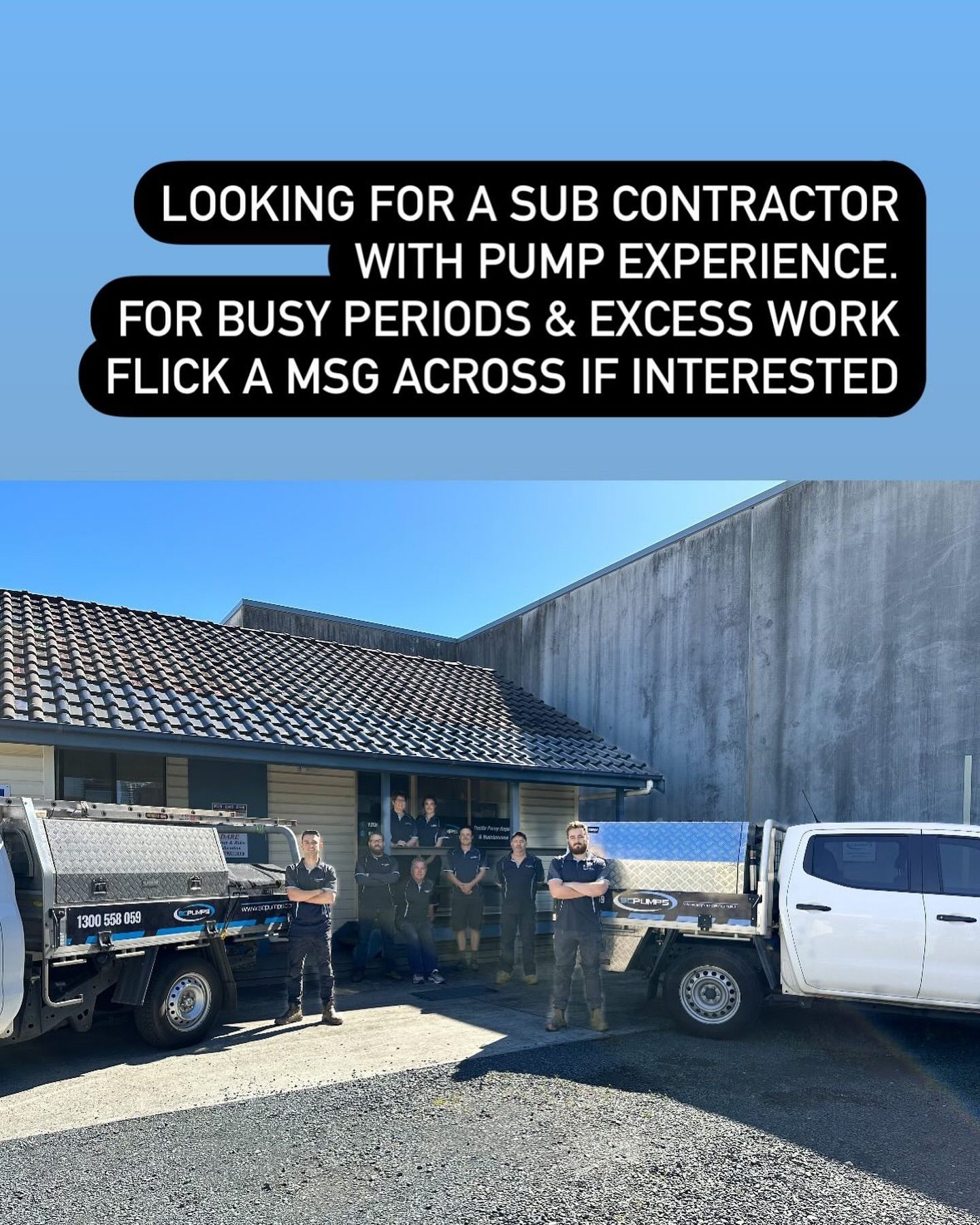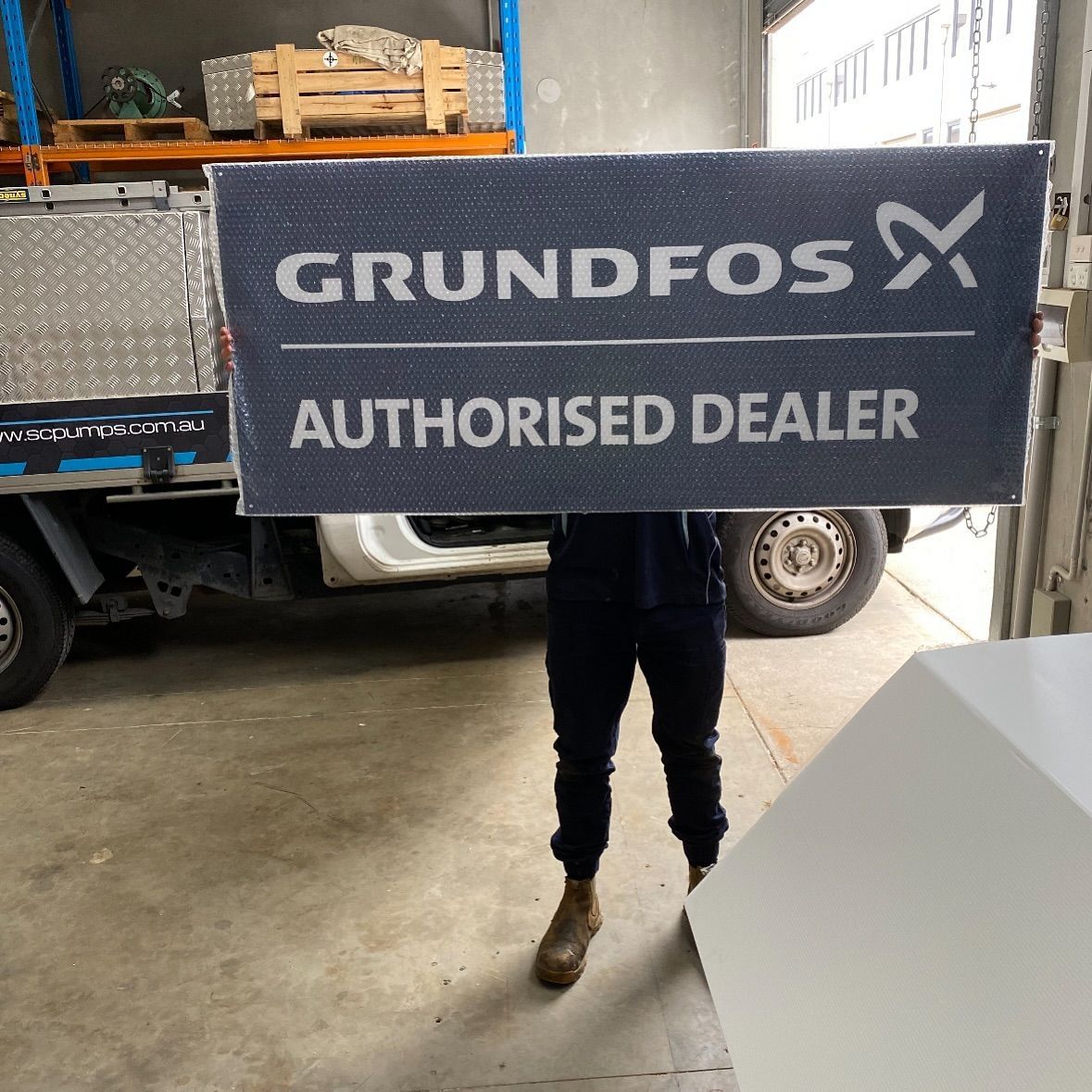The Claustrophobic Upgrade: Replacing a Tight Access Submersible Water Pumps
Tight spaces, poor lighting, and heavy gear. It’s not everyone’s idea of fun, but our techs braved a confined space this month to swap out a struggling submersible pump before it failed completely.
On paper, the job was straightforward: replace an ageing pump before it burnt out. In reality, the worksite told a different story. The sump pit was cramped, the lighting was poor, and the access conditions were less than inviting. Still, these are the kinds of challenges our Sydney Central Pumps team is used to handling. And it’s also where the importance of understanding tight access submersible water pumps really comes into play.
Why Tight Access Pump Jobs Are Different
Not all pump rooms or pits are designed with easy access in mind. Many older buildings, car parks, and industrial sites were built decades ago, when pump serviceability wasn’t a priority. As a result, pump rooms are often squeezed into basements, narrow shafts, or tight service corridors that leave little space to work.
Replacing or repairing pumps in these conditions isn’t just about swapping one unit for another. It requires careful planning, strict safety procedures, and the right type of submersible water pump that can pump reliably in limited spaces.
Submersible pumps, by design, are meant to operate underwater, which makes them a preferred option for sump pits, wastewater applications, stormwater management, and even as a clean / grey water submersible sump pump in certain building systems. They’re also commonly used for drainage garden ponds, fountains, and other water features where reliable water movement is essential. But when space is restricted, choosing the correct pump model and installing it safely is where pump innovation really makes a difference.
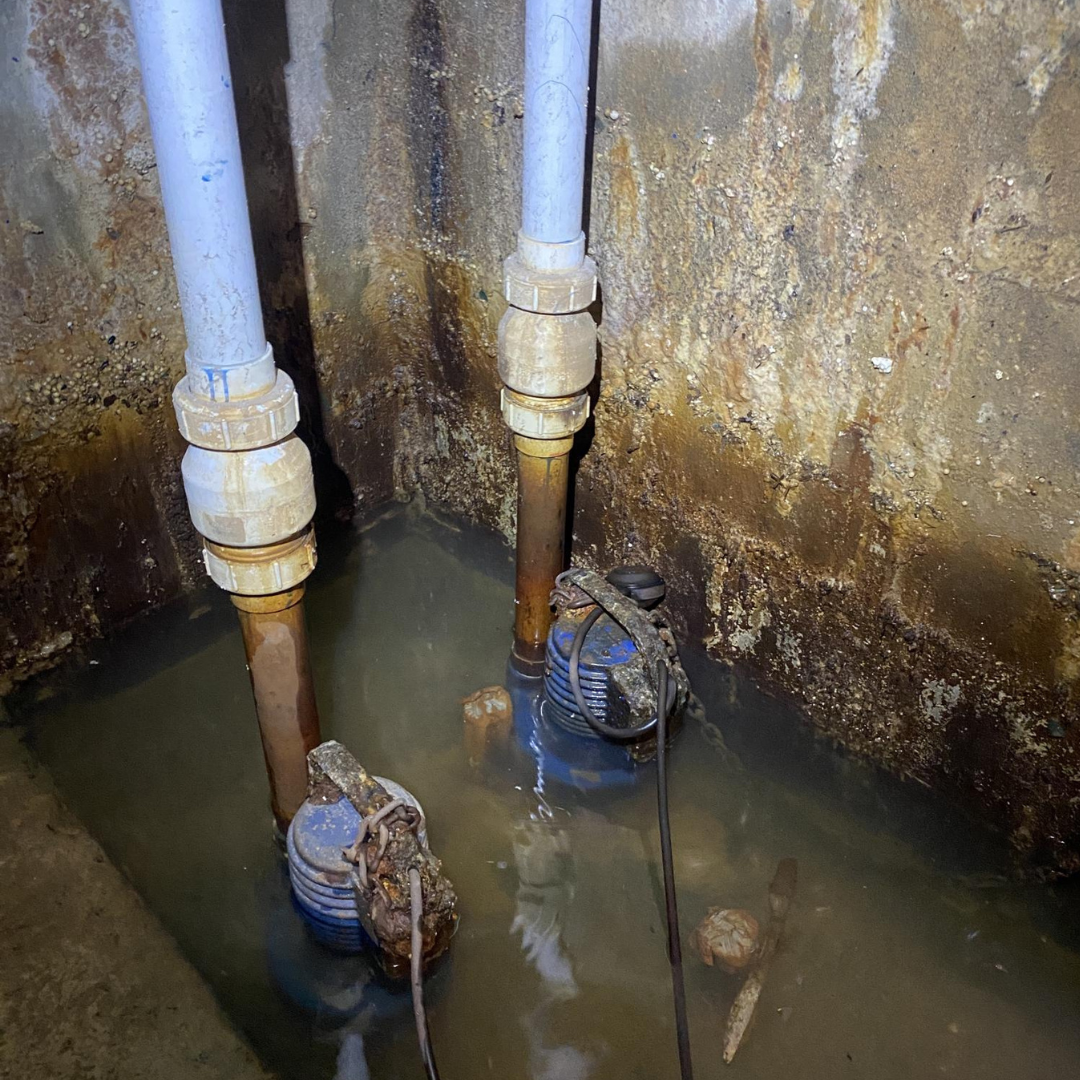
The Job: Confined Space, Real Risks
This particular upgrade involved a sump pit that could only be accessed by lowering our technicians into a narrow, damp space with limited airflow. By law and by good practice, this meant full confined space entry protocols were required.
Two of our techs suited up in harnesses, connected to a tripod system, and worked under continuous gas monitoring. Safety barricades were installed around the site to protect both the team and nearby tenants. Every step was meticulously carried out in compliance with Australian Standards for confined space entry, because while pumps are replaceable, people are not.
The pump itself was failing, showing signs of reduced efficiency and intermittent operation, despite once having an enormous capacity to keep the system flowing. Had nothing been done, it would have caused system downtime, possible flooding, and a cascade of complaints from tenants and managers.
Choosing the Right Pump for Tight Access
When working in confined pits or shafts, not every unit will perform well. This is where a tight access clean grey water submersible pump can be the right solution. Factors like size, weight, power, discharge configuration, and the ability to deliver maximum flow all play a part in determining what pump is suitable.
For this job, we selected a compact unit that could deliver the required flow rate without creating installation headaches. Tight access means you can’t always lower in a bulky, heavy motor. You need an exceptional pump that balances performance with manageability.
Some of the key features we consider when recommending pumps for tight spaces include:
- Compact footprint: The pump must physically fit into the space without hitting walls or obstructing pipework.
- Ease of handling: Lightweight designs or integrated lifting points make manoeuvring the pump safer for the technicians.
- Corrosion resistance: Since sump pits are often humid, damp, and exposed to various forms of water, a stainless steel shaft or coated materials are preferred, particularly in a tight access clean / grey water submersible sump pump built for unparalleled quality in damp and corrosive environments.
- Automatic operation: A pump integrated float switch or built-in level sensor allows the unit to run in both manual and automatic mode, reducing the need for constant manual resets.
- Energy efficiency: In a confined area, heat build-up can be a concern. Energy-efficient pumps run cooler and reduce strain on electrical systems.
The result was more than a simple replacement. With the right pump in place, the system now runs at full capacity, tenants have uninterrupted service, and the building manager has peace of mind knowing the pump won’t be a repeat offender any time soon.
Safety First: Why Confined Space Pump Work Isn’t DIY
It might be tempting to think of a pump swap as a basic job. But once you factor in confined spaces, the risks escalate quickly. Low oxygen levels, poor ventilation, electrical hazards, and the physical strain of working in tight quarters all require strict controls.
That’s why confined space work is never a DIY task. Even experienced building managers and maintenance staff should leave these situations to certified professionals. Our team undergoes ongoing training in confined space entry to ensure every job is completed safely.
Without these precautions, a pump replacement can turn from an inconvenience into a life-threatening situation.
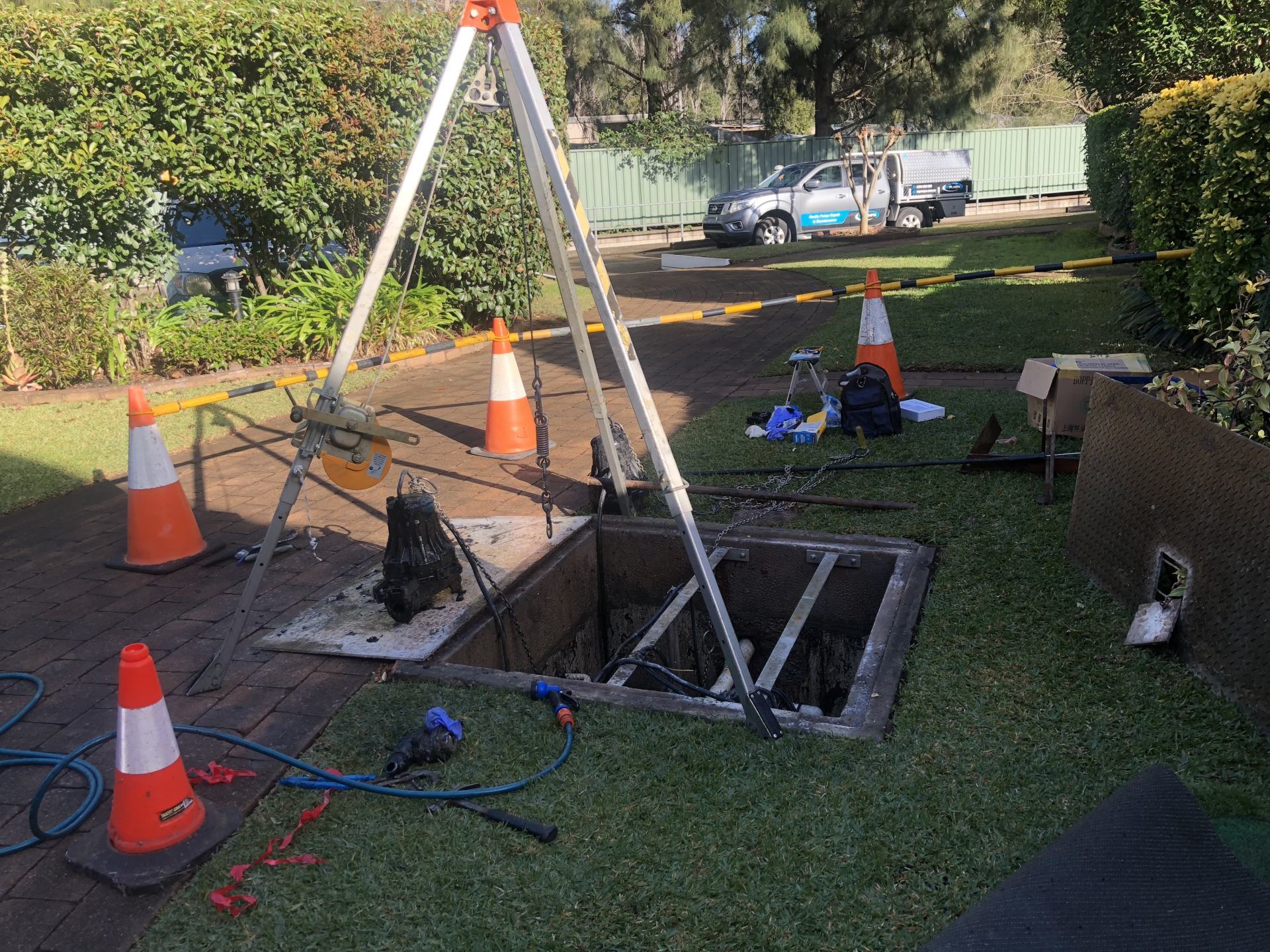
Testing and Commissioning: The Final Steps
Once the new pump was lowered into position and connected, we ran load testing to confirm performance. Flow rates, electrical consumption, and operational cycling were all checked against specifications, just as you’d see documented in a user manual for the pump.
A final inspection ensured the pump was seated correctly, electrical connections were secure, and safety features like floats were operating as intended. After testing, the system was switched back online, water was flowing as it should, and tenants were none the wiser about the effort that went into keeping their building dry and functional.
And of course, we left the space spotless. The old pump was removed, debris cleared, and the site tidied before handover.
The Role of Clean / Grey Water Submersible Water Pumps in Building Management
Submersible water pumps aren’t glamorous, but they have a critical role in keeping buildings safe. They keep car parks dry during storms, manage wastewater, act as a tight access clean / grey water submersible in drainage systems, and prevent flooding in basements and plant rooms. Without them, even a small storm could turn into an expensive disaster.
For property managers, reliable pumps mean fewer tenant complaints, less unplanned downtime, and predictable maintenance budgets. For tenants, it means uninterrupted use of facilities and peace of mind.
In particular, tight access clean / grey water submersible sump pumps are essential in urban environments, where buildings are often retrofitted with equipment in less-than-ideal spaces. Selecting pumps that can perform in both automatic and manual mode while fitting tight access conditions is key to long-term system resilience.
Common Challenges With Tight Access Submersible Pumps
Over the years, our team has encountered a range of issues when working in tight access environments. Some of the most common include:
- Restricted lifting space: Difficult to lower heavy pumps into narrow pits.
- Poor visibility: Low lighting and cramped corners make it harder to carry out accurate installations.
- Moisture and corrosion: High humidity accelerates rust if materials aren’t suitable.
- Limited maintenance clearance: Pumps need to be removed periodically for servicing, so space for future access must be considered.
- Electrical hazards: Tight wiring runs and limited ventilation can lead to overheating and tripping.
Understanding these challenges allows us to recommend tight access submersible water pumps that are better suited for the environment, minimising risks of premature failure.
Why Proactive Maintenance Matters More in Tight Spaces
When access is difficult, the cost of neglect is higher. Each maintenance visit requires additional safety equipment, trained staff, and often longer timeframes to complete the job. That’s why staying on top of preventive checks is even more critical for pumps in confined areas.
Catching a leak, unusual vibration, or electrical issue early, or verifying that the automatic operation / manual setting is working correctly, saves not only money but also reduces the number of risky confined space entries required. A well-planned maintenance schedule ensures pumps last longer and perform better, reducing the need for emergency interventions.
Takeaway: The Claustrophobic Upgrade in Perspective
This month’s upgrade might have looked like a routine pump swap, but the conditions made it far from simple. Tight spaces, confined entry, and the need for the right pump meant the job required planning, expertise, and careful execution.
For us, this was just another day in the field. For building managers, it was one less disaster to worry about. The new submersible pump is in place, the system is running smoothly, and the tenants never even knew there was a potential problem brewing below their feet.
If you manage a building with sump pits, basements, or service areas tucked away in awkward corners, keep in mind that tight access water submersible sump pump aren’t just a piece of hardware. They are critical infrastructure that protect your property, your tenants, and your budget.
Need Help With a Tight Access Submersible Pump?
Sydney Central Pumps specialises in the supply, servicing, and replacement of tight access submersible water pumps across Sydney, including those in the most difficult access conditions. Whether you are dealing with a cramped sump pit, an ageing pump on its last legs, or ongoing maintenance issues, our team has the training and experience to handle it safely and efficiently.
Get in touch today to book a pump health check or discuss your site requirements. A quick call now can save you from the stress, cost, and chaos of an unexpected breakdown tomorrow.

